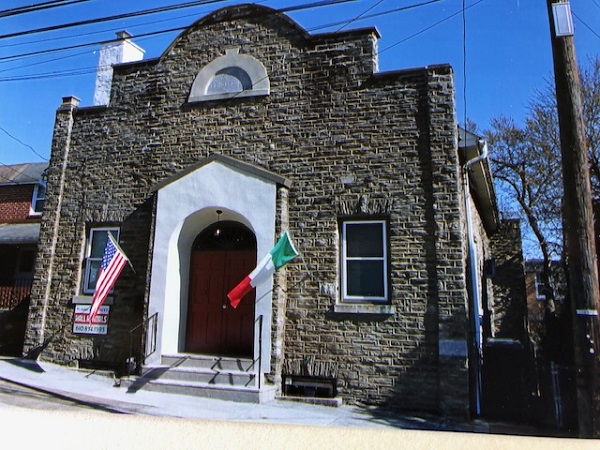
The Andrew Lannutti Post – A Little History and a Lot of Fun
June 21, 2020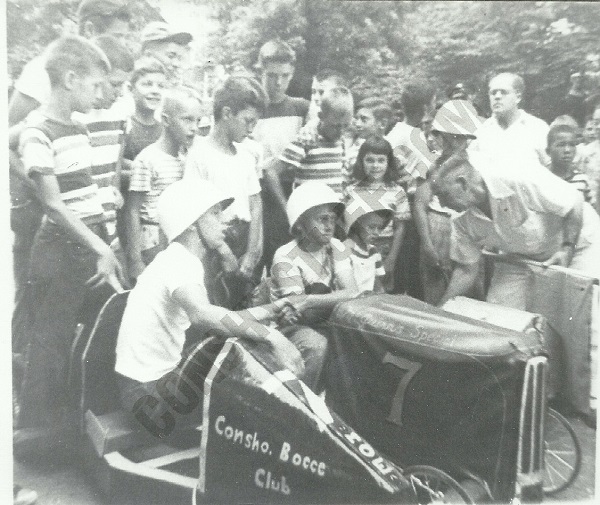
Soap Box Derby – Going Back to the Beginning
June 23, 2020Some Old Swimming Holes, and a Few That Are Still Around
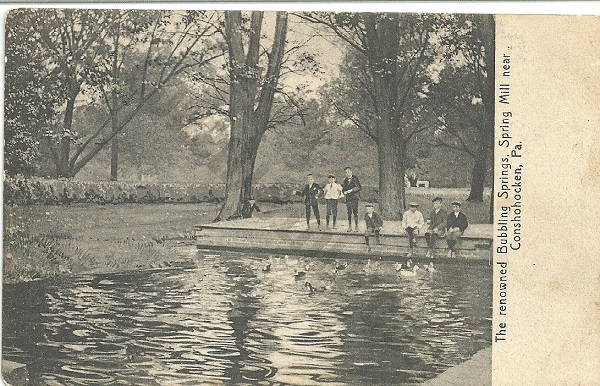
Some Old Swimming Holes
And A Few That Are Still Around
By Jack Coll
6-22-2020
Springtime brings rising temperatures and our thoughts turn to outdoor activities, gardening, cleaning out garages and automobiles, long walks at Valley Forge Park and short walks at Sutcliffe Park. As a kid our thoughts turned to running wild in the woods, long hikes, bike-riding and swimming.
Conshohocken and vicinity has certainly had their fair share of swimming holes over the years going back more than a century. Conshohocken residents were swimming in the Schuylkill River, Schuylkill Canal and the Plymouth Creek long before Conshohocken was incorporated as a borough back in 1850. The river and canal were really quite popular for cooling off back in the 1830’s and 1840’s. By 1920 industry along the banks of the Schuylkill from Manayunk to Reading had contaminated the river. The Health Department had determined that analysis showed that the waters of the Schuylkill River and Plymouth Creek were contaminated with sewage and chemicals and was declared unfit for bathing purposes.
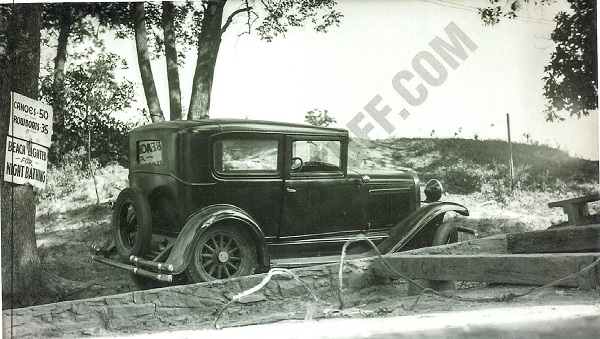
The Schuylkill River remained a popular swimming spot for decades despite the Health Department’s report. Gallagher’s Beach was an extremely popular swimming hole along the river and was located at the foot of Cherry Street from the 1930’s thru the 1950’s. Residents constructed a bath house on the banks of the river, cleared a nice walking path to and from the river and had rope swings, it was the place to be on the weekends. Another swimming spot along the river that was known as “The Point” once located about 200 yards below the lower locks, in the Spring Mill section of the river. From 1910 thru 1925 the borough’s children continued to swim there despite several drowning’s. Joseph Rossiter of the Harry Street School drowned in June of 1913, a month later eight year old Joseph Brennan of East Sixth Avenue walked out a short distance into the river and dropped out of site, by the time his body was recovered he had also drowned. Countless residents have drowned in the Schuylkill River over the years, it has become less and less popular to swim in the river over the past couple of decades.
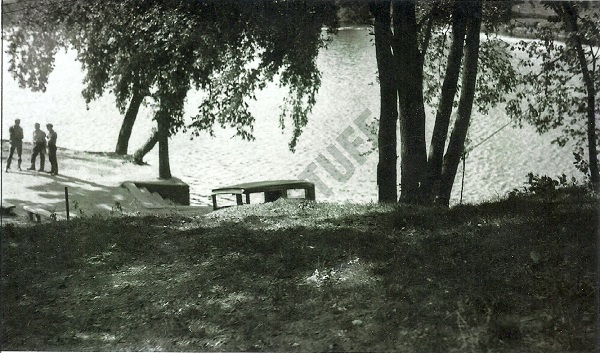
Swimming was extremely popular in West Conshohocken for nearly a half a century at the Balmoral Dam, and then there was this article in the Conshohocken Recorder dated July 26, 1932:
Too Big Crowds Causes
Closing of Dam to Bathers
“Staunchly guarded by four minions of the law to see that the edict is strictly carried out, Balmoral Dam, West Conshohocken’s favorite “swimmin’ hole,” was closed to the public, Saturday.
Complaint on the part of the Glassine Paper Company, whose white mills nestle at its base on Balligomingo Road, led to the pronouncement that hereafter swimmers must find other waters in which to seek relief from summer suns.
Continuation of the waters as a result of its excessive use as a swimming center, caused the paper manufactory to experience serious difficulties in the manufacture of their product. When all attempts to overcome the trouble caused by the impure water, failed the company reluctantly asked the owner, Percy Varian, of Gulph Mills to take measures to relieve the situation.
The Glassine Paper Company, it is stated leases the water rights of Balmoral Dam from Mr. Varian. In order to retain the high standard of quality for which their mills stand, the water used in its manufacture must be free from impurities.
In former years, the body of water, picturesquely set in the rolling landscape of Upper Merion was the mecca of the boys of the neighborhood. Each year, however, its popularity increases, until a check made on the number of swimmers showed that five thousand used its waters, during a single weekend; many of them coming from as far distant as Philadelphia.
Notices prohibiting swimming were placed on the property some time ago, but were not only ignored, but frequently torn down by the swimmers.
Complaints of disorderly actions and bad language on the part of a number of the visiting swimmers from other sections were also made by residents of the section.
Officer Lester Smull, of Upper Merion Township with a trio of constables is now stationed at the dam, waiting to deal stringently with any offenders.”
The Philadelphia Swim Club held hundreds of swimming meets in the Schuylkill over the years. Major meets were held in the Spring Mill and Miquon sections of the river. Conshohocken’s own Dave Traill was a superstar on the river winning dozens of medals over the years and sports writers had Traill pegged as an Olympic hopeful.
Perhaps the most popular and refreshing watering hole in the Conshohocken area was Bubbling Springs located in the Spring Mill section. Throughout the late 1800’s and early 1900’s dozens of clubs and societies would hold summer picnics in the grove under the cover of the many willow and sycamore trees.
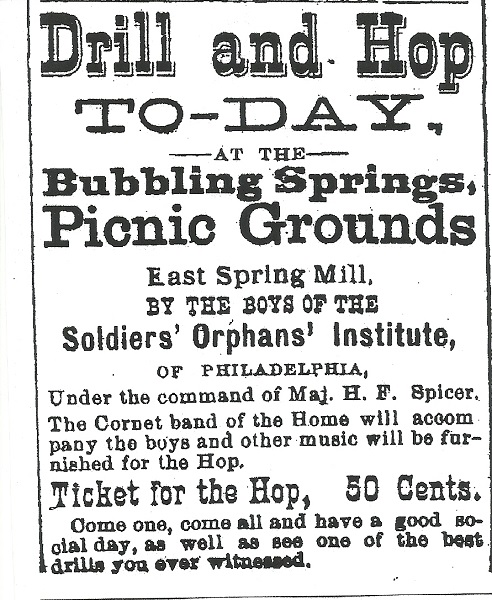
Throughout the 1880’s and 1890’s organizations like the Drill and Hop, an organization that supported children and orphans of the soldiers who were killed or wounded in the Civil War would hold fundraisers at Bubbling Springs to support the orphans. Residents would be invited to attend and enjoy a picnic, and music featuring numerous bands performing throughout the day that also included swimming

It was a “Lover’s Lane” of the 1920’s, 1930’s and 1940’s. On Saturday and Sunday afternoon’s the grove would be over flowing with teenagers and twenty-something’s listening to music from car radios, shinning up their cars and dipping their feet into the spring water while sitting on the doc, it was a remarkable time at a remarkable place.
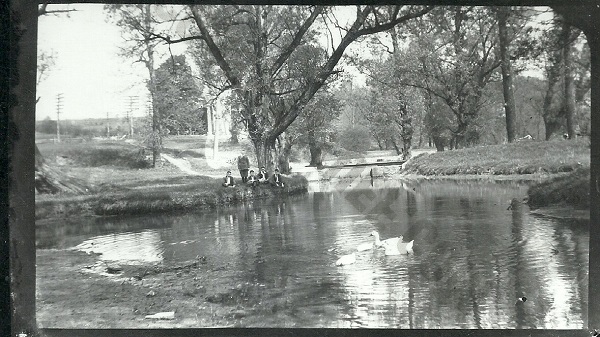
Bubbling Springs was never known to be dry despite the cold or heat. Water in the springs stays about 50 degrees all year around, never freezing. Members of the Temperance Movement would hold their meetings and outings at Bubbling Springs, temperance societies of Plymouth, Chestnut Hill and Roxborough often attended these outings. St. John’s Conshohocken Church would hold masses there in the summertime with Methodist Church congregations from throughout the Philadelphia area also attending.
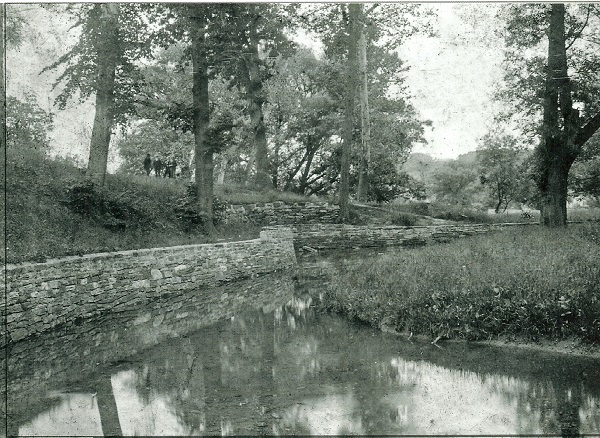
Bubbling Springs water was crystal clear and was supplied by two natural springs. By close examination of the bed of Bubbling Springs there was a layer of peculiar white gravel with numerous traces of quicksand. Whitemarsh Township gets its name from the white gravel and soil of Bubbling Springs.
Going back to the 1830’s and 1840’s Montgomery County was full of quarries especially in Whitemarsh, Plymouth, Upper Merion, West Conshohocken and Conshohocken. By the turn of the century many of these quarries had been abandoned and full of water, making them prime swimming holes.
Beatty’s Quarry once located in Connaughtown was the place to cool down on a hot summer’s day for many years from the 1890’s thru the 1930’s. There was Martin Quarry, once located along Eighth Avenue west of Wood Street operating during the early part of last century. Other area quarries included the Henderson quarry, Big Blue and Little Blue quarry once located on Germantown Pike, there was McAvoy’s Quarry, later known as “Frog Hollow,” Corson’s Quarry, Albertson Quarry, (currently Carriage Hill Apartments), Leeham’s Quarry once located just off Germantown and Butler Pikes and of course there was Marble Hall quarry.

Pott’s Quarry was one of the best known swimming quarries in the Conshohocken area. The quarry located off Cedar Grove Roadproduced marble for historic buildings throughout the Philadelphia area for more than a century. Once the quarry filled with water sometime in the 1890’s it ceased operation of the beautiful blue marble.
From 1900-1915 the water filled quarry sat abandoned and then Hollywood came calling. It turned out that the quarry was a perfect setting for Hollywood’s silent era films. By 1915 moving picture companies began filming scenes at the quarry and some film companies would rent the entire Cressman property setting up props like log cabins and Indian tee-pees to aid visuals of the film. It turned out that the cliffs, or what became known as “The Peak” provided a spot where the horse and rider could jump off the cliff, a distance of about 30 feet into the water of the quarry and land safely with no harm to horse or rider. A number of these films were shown at the Conshohocken movie houses including “The Gem’ and “Palace” Theatre’s, and later at the Riant theatre.
The Conshohocken Recorder newspaper reported on a number of movies being filmed at Pott’s including one scene where five horses with riders jumped off the cliff at once landing safely in the water to the delight of hundreds of spectators that were on hand.
Although public swimming began once the quarry closed and filled with water, in 1919 authorities shut down the swimming following a drowning at the quarry. The owner of the property at that time was Mr. Cressman and to gain access to the quarry one had to cross through his property and once the drowning happened Mr. Cressman posted no trespassing signs on his property.
A few years later the quarry was opened back up to the public and in 1923 a local Boy Scout Troop constructed two bath houses and cut steps down to a beach area. The following year in 1924, a wading pool had been cleared and the bottom covered with gravel, the greatest depth of the pool was four feet. The scouts also built a large platform called a float out in the water for sun-bathers or a resting area for the swimmers, outhouses were later added to the area. By 1925 a diving board and a second float was added, with all the improvements thousands of people from all over Montgomery County and the Philadelphia region started showing up to use the quarry on the hot summer days.
Conshohocken and Whitemarsh Police were forced to make regular rounds during the summer hours keep an eye on the bathers. The scouts started policing the area for trash on a daily basis and the Township started testing the water on a daily basis checking for B. Coli and other bacteria’s.
By 1926 the Potts Quarry swimming hole was under the control of the Whitemarsh Community Center, steady improvements had been made to the swimming area, full time life guards were on duty watching the swimmers while the Boy Scouts patrolled the shore line looking for any violations on the beach. Andorra Nurseries who now owned the property allowed for a large parking lot in a field next to the quarry and visitors could pay 10 cents and park all day.
The Swim Club survived into the 1940’s, when it became known as “The Sherry Lake Swim Club,” the property was still owned by the Andorra Nurseries and the Philadelphia Electric Company. By the late 1940’s Sherry Lake Swim Club was known as Conshohocken’s number one summer recreation resort, with families spending their entire summer relaxing at the resort. By 1955 the resort was shut down, “No Swimming” signs were posted, a wire fence was erected across the Cedar Lane driveway to keep all swimmers out. Numerous reasons were given for the closure.
Due to the closure of the popular swimming hole a group of residents banded together to open a new swim club that would be called Ply-Mar Swim Club located within a stones throw from Potts Quarry. Ply-Mar Swim Club opened in 1957 and is still going strong after more than 60 years.

Another popular swimming hole in the 1940’s and 1950’s was Donovan’s Quarry on the former Hitner property at Germantown Avenue at Joshua Road. In the late 1940’s, developers started building houses on Mathers Mill Road, Rebel Road, Edmonds Road and Quarry Lane. This development attracted young married couples with children looking for recreation, the area became known as Whitemarsh Hill at Ridge Pike and Joshua Road. Many of these families would venture over to Donovan’s quarry to spend the afternoon where they could picnic and bath in the cool waters of what was left of the quarry. The Donovan’s Quarry swimming area was filled in and is now a ball field at Miles Park.
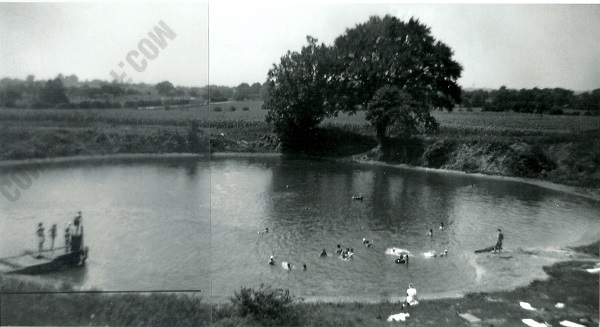
While we’re talking about the 1940’s we really should mention Mermaid Lake located on Jolly Road in Blue Bell because they were established in 1942 and for nearly eight decades they have continually improved their facility. Year after year they became one of the regions finest swim clubs.
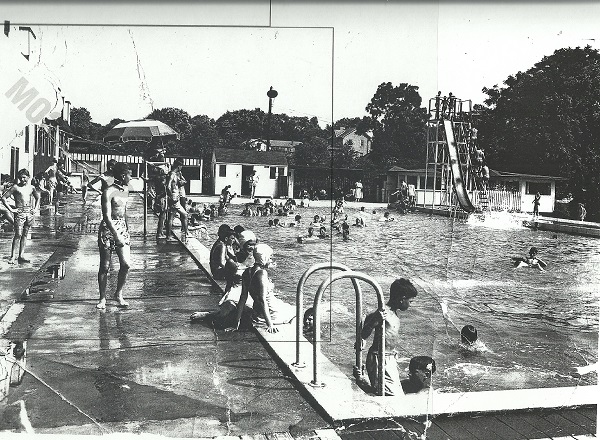
One of the area’s more well-known Swim Clubs was Marble Hall Swim Club once located on Ridge Pike. The swim club first opened on May 19, 1932, it was stated that the cost of construction for the club at that time was $55,000, nothing to sneeze at considering the country had yet to recover from the Wall Street Depression. In its hey-day the club drew members from the entire Philadelphia suburbs including the entire Main Line. During the World War Two years military men and women were greeted at the gate with military discounts and special vouchers were distributed a one day pass costing 27 cents plus 3 cents War Tax, towels were five cents extra. Marble Hall was a happening place until 1994 when it closed and the property was sold off for the construction of houses.
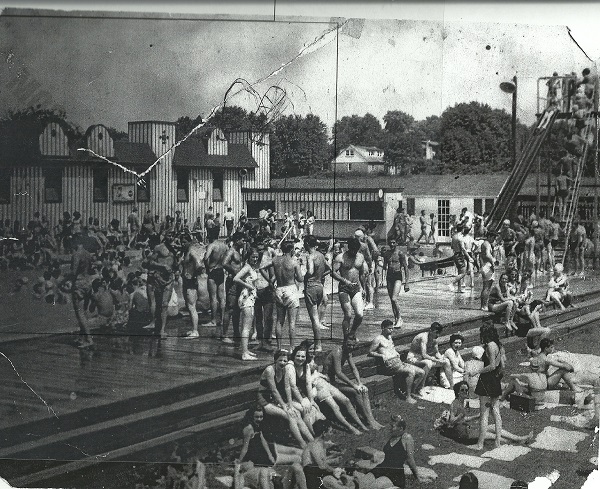
Then there was the ever popular Green Lane Park/Upper Perkiomen Valley Park. Green Lane Park is Montgomery County’s largest County Park, at approximately 3,400 acres. The park began in 1939 when the Montgomery County Commissioners dedicated 425 acres as Upper Perkiomen Valley Park.
The Philadelphia Suburban Water Company began planning Green Lane Reservoir in 1929 with the goal of providing a reliable water supply for the region. The actual construction of the dam across the Perkiomen Creek began in 1954 and was completed in 1957. This construction project created a natural lake and in 1959 the Philadelphia Suburban Water Company opened Green Lane Reservoir for public use for recreation activities with a limited shoreline that included fishing, boating and swimming.
Over the next three decades Green Lane Park was a very popular summer attraction with the lake, beach, camping and picnicking facilities especially on hot summer days. But all good things come to an end, swimming was banned from the park. I don’t have an official reason in front of me but I believe, (just my opinion here) the water was deemed by the health department as unhealthy, caused by all the geese and duck feces contaminating the water, again that is not an official statement but my option, if someone out there can clarify, it would be appreciated.

I had many wonderful outings at Green Lane spending Saturday or Sunday afternoons with my in-laws and family swimming and picnicking. I also spent a few years there camping and fishing with my son Brian, Good Times.

I know that for a number of years Sutcliffe Park had a natural pool, meaning that the filtering system was built in by running water from the creek that ran in one side of the pool pushing water out the other side of the pool. I wasn’t around back then to use or witness the pool and it’s the one thing I never saw any pictures of. If anyone out there reading this has any photographs of the Sutcliffe Park Pool I would love to see them. I’m not quite sure when the pool was constructed (I’m thinking 1959 or 1960) and I’m not quite sure when the pool was demolished I can only speculate that the pool was there from sometime in the very late 1950’s and might have lasted until the early 1960’s. Any help with photos, time-line or comments would be greatly appreciated, thank you.
For a time there was a wading pool at Leeland Park. The pool was dedicated in August of 1952 and while it wasn’t a pool deep enough to go swimming in it was certainly a welcomed relief from the hot summer sun back then.
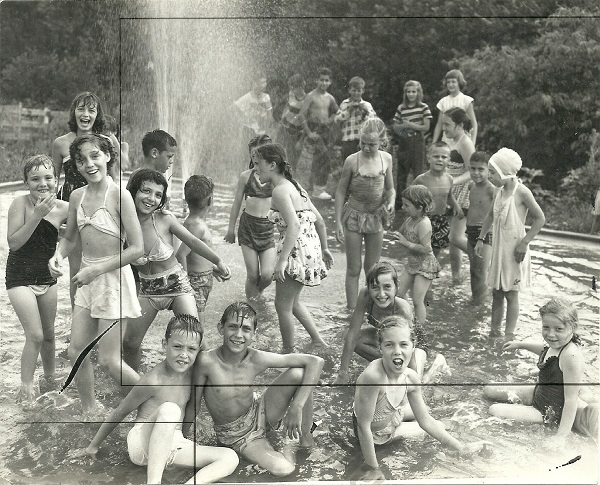
Let’s not forget about the ever popular Plymouth Swim Club located on Gallagher Road in Plymouth Township. In 1960 a group of Plymouth residents came up with the idea to convert a 13 acre tract of land on the upper part of Gallagher Road in Plymouth Meeting into a swim club, to help ease local residents stress in more ways than one. It started with a pool, and lots of local residents. Today the Plymouth Swim Club continues on that very same strong foundation created more than half a century ago.
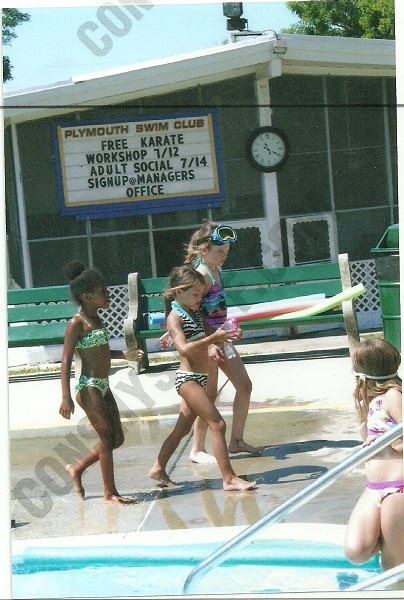
The swim club contains three pools-an infant pool, an Olympic-sized intermediate depth pool and an Olympic sized swimming/diving pool with a three-foot and 10-foot diving boards. The club also features four tennis courts, a basketball court, baseball diamond, volleyball court, children’s playground and a picnic grove.

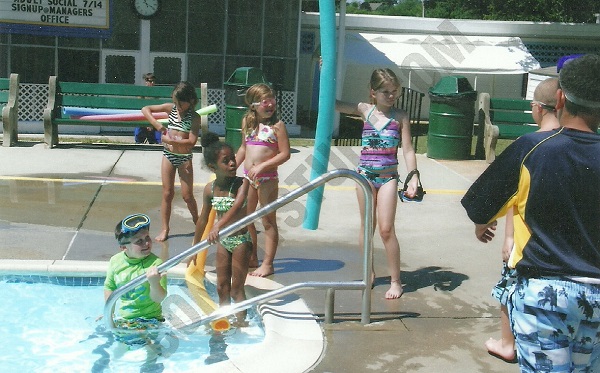
The Plymouth Swim Club also features a number of different events throughout the year that include adults and children’s events. The Plymouth Swim Club is truly a family affair.
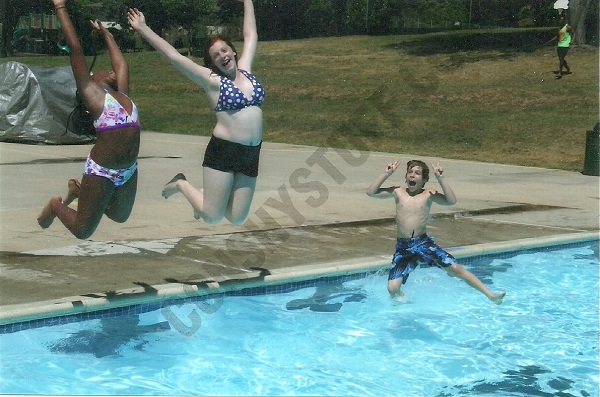
When you talk about a strong family place to go to there was no better place than “Jimmy’s Place” Swim Club. Jimmy DeCerio was a young professional boxer out of Norristown back in the early 1950’s who boxed throughout the Philadelphia, New Jersey and New York area’s including a number of bouts at the Conshohocken “A” Field back in the day.
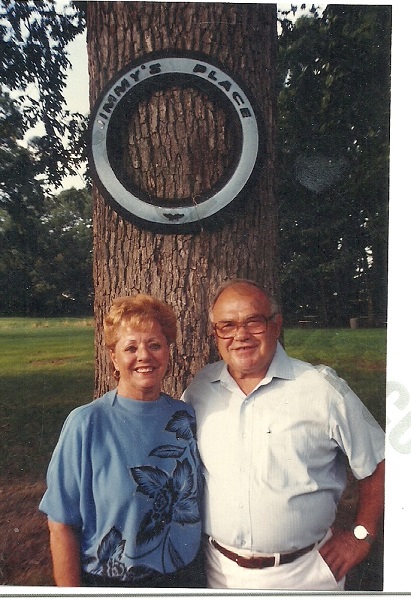
In 1951 Jimmy purchased the property at 909 East Germantown Pike from the Moore family and decided to open a swim club. For the next 37 years of his life the former boxer and his wife Mary entertained and provided nearby residents with a cooling off resort. When I say entertained I mean relaxing by the pool with a cool drink in your hand was one thing but the card action in the back room was this whole other level of entertainment. Jimmy once told me that more than anything he enjoyed playing cards, (Not so high stakes I would assume) with his friends that included the late Al Donofrio, and other guys like Joe Purcell, George Griffin, Big John Cassinelli, Charles Butera and a long list of others.
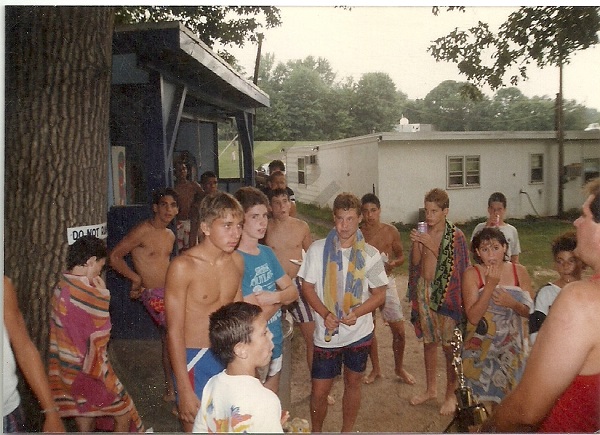
Jimmy’s Place was definitely a different kind of swim club, he told me tales of nights when the Russ Cardamone Band would come and play the swim club with live music until 11p.m. and another band with Jules Lombardi would take over playing until 7a.m. Jimmy noted that the next morning the Plymouth Chief of Police Vito Fusco called and told him he had gotten more than 20 complaints about the noise overnight and was pissed that Jimmy didn’t invite him. Then there was the time about Jerry Blavat hosting parties at the club and other stories that we don’t have the room for here.
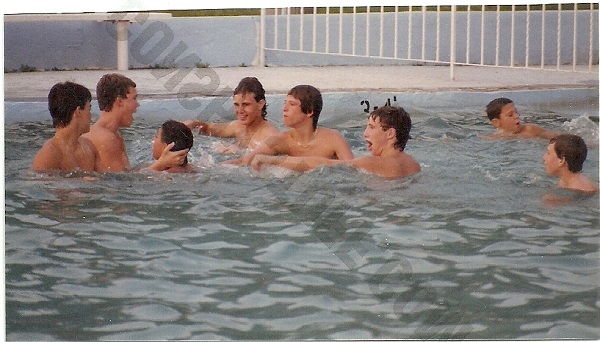
Perhaps you might have a few memories from Jimmy’s Place that you would like to share. After 37 years of loving the community Jimmy and Mary closed the club in 1988, I’m sure the community loved them back. A bunch of town houses occupy the site of the once popular Jimmy’s Place.
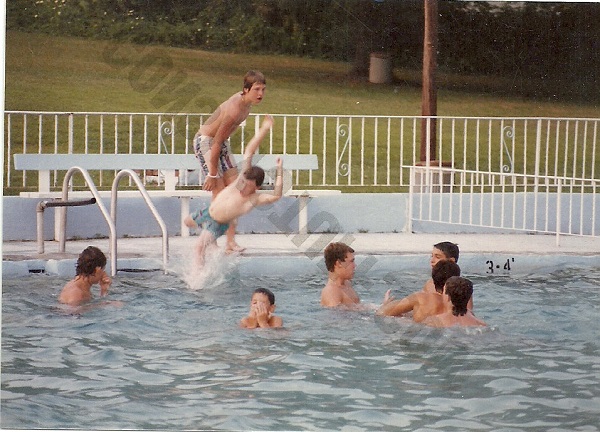
There were other popular swim clubs that have long been closed including Andorra Swim Club, Penn Square Swim Club and the very popular Markley’s Swim Club, Doris Markley was an old friend of mine and fellow photographer. Upper Merion Swim Club closed years ago and I think it was due to the proximity of Tysons Dump, there was also the Lafayette Swim Club owned by one of the Volpe’s back in the day and it continues under the care of the Upper Merion Community Recreation center.
One final note, I’m not sure how popular it was or even if it had a name but I remember going swimming several times in the quarry in West Conshohocken off Jones Road. We would craw through the fence and work our way down the rocks to get into the water or get to a point where you would dive off the rocks, this was sometime in 1969, 1970 or 71. If anyone can help me with a name of that place I would appreciate it.
Oh, and one more Conshohocken swimming hole, “Bare-Ass Beach.” That’s right, Bare-Ass Beach was once located on Colwell Lane down around where Fifth Avenue ends across from where Happy Gambone’s stable was once located. Down the other side of Colwell Lane was Palmer’s Farm.
According to a long-time friend of mine Tom Maloney, the Bare-Ass Beach was just above Frog Hollow in the area of where Ardmore Tire is currently located, just behind Plymouth Creek. “You have to remember that Colwell Lane as a street ended at Sixth Avenue, it was just kind of a dirt access path from Sixth Avenue to West Elm Street,” said Maloney. Colwell Lane was finally opened from Sixth Avenue to West Elm Street in 1966. “It was a great place to swim and have a good time back in the late 1940’s and early 1950’s but if you stayed to late in the evening the Alan Wood Steel Company would dump the hot slag near the creek and a lot of time the hot slag would be poured in and around the Plymouth Creek up-stream, and the water would get real hot for a while and you couldn’t swim there anymore for the evening. (I think that might have been when the bathing suits or underwear came off) But when they dumped the hot slag the “Connaughtown Moon” would light up the sky and what a site to see, it was beautiful being right under-it.”
Well, that’s where the Bare-Ass Beach was located, but as to what went on there you’ll have to ask grand-pa, grand-ma knew what was going on there but she ain’t talkin’ so ask grand-pa.
Well without counting I must have mentioned two dozen watering holes and swim clubs where many of us were able to cool down over the years. I hope I mentioned your favorite place to swim, if I didn’t let us know, perhaps you’ll recognize a few of the photographs posted with this article and I hope you enjoy them.
Have a COOL summer and hey, Thanks for the Memories!
Photographs above and below include:
Three Photos of the Beach at Pott’s Quarry and a diver leaping from “The Peak,” the quarry was located along Cedar Grove Road, Pott’s Quarry later turned into Sherry Lake Swim Club before being closed in 1955.
The color photograph shows the beach area at Green Lane Park in Upper Perkiomen near Green Lane. Black & White photo shows people on the beach at Montgomery County Park in August of 1940.
Three photos of the Bubbling Springs located in the Spring Mill section of Conshohocken where residents would often gather in the summertime for bathing, swimming and picnicking.
An advertisement from the Conshohocken Recorder newspaper from June 23, 1888 advertising an event at Bubbling Springs.
The photo showing all the children in the wading pool was located at Leeland Park, East 12th Avenue, this photo was taken in 1953.
Four photographs from “Jimmy’s Place” once located on Germantown Pike for 37 years, showing Jimmy and Mary DeCerio, and children in and around the pool.
Local residents shown in the lake and on the dock was Donovan’s Quarry in the early 1950’s. The quarry was later filled in and is the current site of a baseball field at Miles Park off Germantown Pike. Timothy Donovan can be seen standing on the edge of the waters at Donovan’s Quarry.
Two photos show the swimming pool and sand pit at Marble Hall Swim Club once located on Ridge Pike, plus an advertisement from spring of 1961 that ran in the Conshohocken Recorder newspaper.
Two photos of Gallagher Beach once located along the Schuylkill River at the foot of Cherry Street back in the 1930’s through the 1950’s.
Four photos of children having a good time at Plymouth Swim Club

